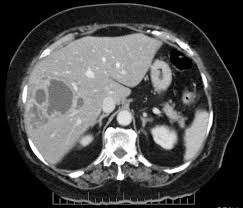W.B.C.S. Main 2018 Question Answer – Medical Science – Liver Abscess.
WBCS মেইনস ২০১৮ প্রশ্ন উত্তর – চিকিত্সা বিজ্ঞান – লিভার অ্যাবসেস।
1)Write a short note on Liver Abscess.
A pyogenic liver abscess (PLA) is a pocket of pus that forms in the liver due to a bacterial infection. Pus is a fluid composed of white blood cells and dead cells that typically forms when your body fights off infection. In the case of PLA, instead of draining from the infection site, the pus collects in a pocket inside the liver. An abscess is usually accompanied by swelling and inflammation in the surrounding area. It can cause pain and swelling in the abdomen.Continue Reading W.B.C.S. Main 2018 Question Answer – Medical Science – Liver Abscess.
A pyogenic liver abscess can be fatal if it’s not treated promptly.
The most common cause of PLA is biliary disease. This is a broad term for conditions in the biliary tree affecting the liver, pancreas, and gallbladder. According to Johns Hopkins Medicine, an infected, inflamed common bile duct is associated with up to 50% of liver abscesses.
Other causes and risk factors include:
- bacteria from a ruptured appendix that forms an abscess
- pancreatic cancer
- colon cancer
- inflammatory bowel disease, such as diverticulitis or a perforated bowel
- a blood infection, or septicemia
- trauma to the liver by accident or injury
According to research published in Clinical Infectious Diseases, people with diabetes mellitus are at 3.6 times the risk for this condition because they’re often more susceptible to infection.
PLA symptoms resemble those of gallbladder inflammation or massive infection. They may include:
- chills
- vomiting
- fever
- right upper abdominal pain
- sudden dramatic weight loss, such as 10 pounds in a few weeks
- dark-colored urine
- whitish or grey, clay-colored stool
- diarrhea
Diagnosis of pyogenic liver abscess
Your doctor may order a combination of blood cultures and imaging tests to diagnose the condition. The following tests may be used:
an abdominal ultrasound to locate an abscess
a CT scan with intravenous contrast, or injected dye, to find and measure the abscess
blood tests to look for signs of infectious inflammation, such as an increased serum white blood count and neutrophil level
blood cultures for bacterial growth to determine which antibiotic(s) you need
an MRI of the abdomen
A pyogenic liver abscess may appear as a mass containing gas and fluid in the liver when viewed with CT scans.
Treatment of pyogenic liver abscess
Some people can be successfully treated for PLA with antibiotics alone. Most, however, need drainage of the abscess, which is considered to be the ideal therapy for PLA. This involves inserting a needle and possibly placing a drainage catheter into the abscess to remove the infection-containing pus. Your doctor may also perform a liver biopsy at the same time by taking a sample of your liver tissue. This helps your doctor determine the overall health of your liver. These invasive diagnostic and interventional procedures are performed with CT scan or ultrasound guidance.
Doctors try to treat PLA without surgery if possible to prevent the risk of bacteria spreading through the body. However, in more severe cases, surgery may be required to fully remove the abscess material.
After surgery you’ll be treated with antibiotics for several weeks to help fully remove the infection. According to a review article in Clinical Liver Disease, parenteral (intravenous) antibiotics followed by oral antibiotics are used to treat and manage PLA. The initial course of intravenous antibiotics aids in the initial healing process. Several weeks of taking strong antibiotics by mouth can help you heal after you’ve had a good clinical response to surgical and parenteral antibiotic therapies.
The main complication of PLA is sepsis, which is a severe infection that causes severe systemic inflammation. This can lead to a dangerous drop in blood pressure. If it’s not treated promptly with antibiotics and intravenous fluid, sepsis can be fatal.
PLA drainage and surgery have a risk of spreading bacteria throughout your body. This may cause widespread infection or the formation of abscesses in other organs.
Bacteria released and spread throughout the body can cause:
- septic pulmonary embolism, which occurs when a bacterium stimulates a clot in one or more arteries in the lungs
- brain abscess, which can cause permanent neurological damage
- endophthalmitis, which is an infection in the inner part of the eye that may lead to vision loss
Our own publications are available at our webstore (click here).
For Guidance of WBCS (Exe.) Etc. Preliminary , Main Exam and Interview, Study Mat, Mock Test, Guided by WBCS Gr A Officers , Online and Classroom, Call 9674493673, or mail us at – mailus@wbcsmadeeasy.in
Visit our you tube channel WBCSMadeEasy™ You tube Channel
Please subscribe here to get all future updates on this post/page/category/website



 Toll Free 1800 572 9282
Toll Free 1800 572 9282  mailus@wbcsmadeeasy.in
mailus@wbcsmadeeasy.in


















































































































